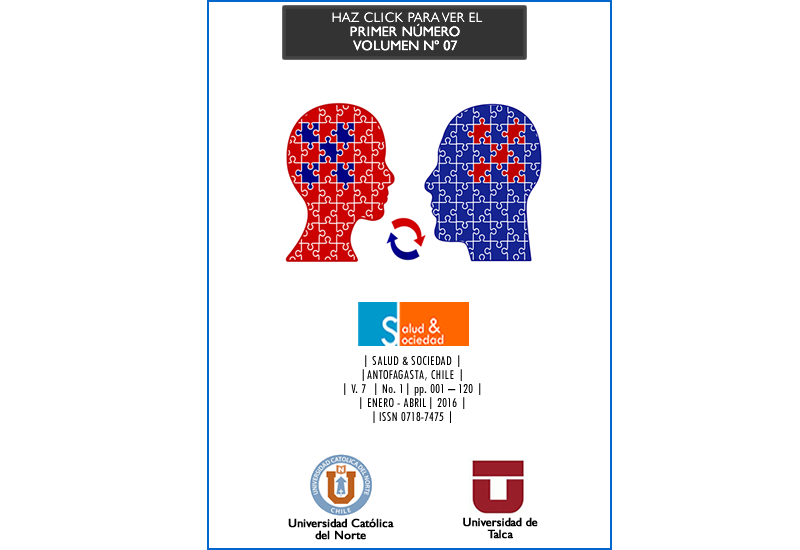Escala de empatia focada em grupos: Evidência psicométrica em diferentes instituições sócio-educacionais
DOI:
https://doi.org/10.22199/S07187475.2016.0001.00002Keywords:
Empatia, avaliação, modelagem estrutural, jovens civis e militares, Empathy, assessment, structural modeling, young civilians and young military,Abstract
A empatia focada em grupos refere-se à capacidade afetiva das pessoas sentirem e pensarem o sofrimento de grupos específicos. O presente artigo procurou reunir evidências da validade fatorial e consistência interna da Escala de Empatia focada em Grupos (EEG), considerando amostras distintas de jovens. 376 estudantes do ensino médio, entre 17 e 33 anos, da cidade de João Pessoa-PB, sendo 200 de uma instituição pública e 176 de uma instituição militar de ensino, responderam a EEG e a um questionário demográfico. Observou-se que, para ambas as amostras, a escala revelou indicadores psicométricos que garantem a estrutura multifatorial já encontrada por outros autores. Ainda se constatou que os jovens militares apresentaram médias superiores à dos jovens civis em relação a três de quatro componentes testados, mostrando-se mais empáticos ao sofrimento de grupos minoritários, ao de apenados e ao de trabalhadores do que os estudantes civis.
Introduction: Empathy focused on groups is concerned with humans’ capacity to feel and think about other people’s pain and sorrow. Objective: This article aims at gathering evidence of factorial validity and internal consistency of the Empathy Scale focused on Groups (ESG) considering varied samples of young people. Method: 376 high school students from the city of João Pessoa - Paraíba, (200 from public institutions and 176 from a military institution), between the ages of 17 and 33, answered the ESG and a demographic questionnaire. Results: In both samples, the scale revealed psychometric evidence that confirms the existence of a multifactorial structure already identified in previous research. It has also been found that the young military achieved higher averages than the young civilians regarding three or four aspects of the test. Conclusion: Young military students are more sympathetic with the suffering of minority groups (prisoners and workers) than young civilian students.
Downloads
References
Beltrán, M. A. V. & Cardona, M. A. (2005). La sociología frente a los espejos del tiempo: Modernidad, postmordernidad y globalización. Medelin: Universidad EAFIT.
Bilich, F., Silva, R. & Ramos, P. (2006). Análise de flexibilidade em economía da informação: modelagem de equações estruturais. Revista de Gestão da Tecnologia e Sistemas de Informação, 3 (2), 93-122.
Byrne, B. M. (1989). A primer of LISREL: Basic applications and programming for confirmatory factor analytic models. New York: Springer-Verlag.
Byrne, B. M (2006). Structural Equation Modeling with EQS, basic concepts, applications, and programming. 2th edition, London: LEA Publishers.
Conselho Nacional de Saúde – CNS. (1996). Diretrizes e Normas Regulamentadoras de Pesquisas Envolvendo Seres Humanos. Recuperado em 02 de Setembro de 2011, da WEB (página da WEB): http://conselho.saude.gov.br/resolucoes/reso_96.htm.
Davis, M. H. (1980). A multidimensional approach to individual differences in empathy. Catalog of Selected Documents in Psychology, 10 , 85, 1-17.
Dumont, L. (1985). O individualismo: Uma perspectiva antropológica da ideología moderna. Rio de Janeiro: Rocco.
Eisenberg, N. & Strayer, J. (1990). Empathy and its development. New York: Cambridge University Press.
Formiga, N., Rique, J., Galvão, L., Camino, C. & Mathias, A. (2011). Escala Multidimensional de Reatividade Interpessoal – EMRI: consistencia estrutural da versal reduzida. Revista de Psicologia de Trujillo(Perú), 13 (2), 188-198.
Galvão, L., Camino, C., Gouveia, V. & Formiga, N. (2010). Proposta de uma medida de empatia focada em grupos. PSICO, 41 (3), 399-405.
Hair, J. F., Anderson, R. E.; Tatham, R. L. & Black, W. (2005). Análise Multivariada de Dados. Porto Alegre: Bookman.
Hoffman, M. L. (1991). Empathy, social cognition and moral action. Em: W. M. Kurtines & J. L. Gewirtz (Orgs.), Handbook of moral behavior and development. Vol. 1. New Jersey: LEA.
Hoffman, M. L. (2003). Empathy and moral development:Iimplications for caring and justice. Cambridge, England: Cambridge University Press.
Hogan, R. (1969). Development of an Empathy Scale. Journal of Consulting and Clinical Psychology, 33, 307-316.
Joreskög, K. & Sörbom, D. (1989). LISREL 7 user's reference guide. Mooresville: Scientific Software.
Lipovetsky, G. & Charles, S. (2004). Os Tempos Hipermodernos. São Paulo: Barcarolla, Editorial Anagrama.
Mehrabian, A. & Epstein, N. (1972). A measure of emotional empathy. Journal of Personality, 40, 525-543.
Morin, E. (2005) Educação e complexidade: Os sete saberes e outros ensaios. 3. ed. São Paulo: Editora Cortez.
Muenjohn, N. & Armstrong, A. (2007). Transformational Leadership: The influence of culture on the leadership behaviors of expatriate managers. International Journal of Business and Information, 2, 265-283.
Oceja, L.V. & Jiménez, I. (2007). Beyond egoism and group identity: Empathy toward the other and awareness of others in a social dilemma. The Spanish Journal of Psychology, 10 (2), 369-379.
Paul, E. S. (2000). Empathy with animals and with humans: are they linked? Anthrozoos,13(4), 194-202.
Pérez-Albeniz, A., De Paúl, J., Etxeberría, J., Montes, M. P., & Torres, E. (2003). Adaptación de Interpersonal Reactivity Index (IRI) al español. Psicothema, 15, 267-272.
Schultz, D. P. & Schultz, E. S. (1998). História da psicologia. São Paulo: Cultrix.
Strayer, J. & Eisenberg, N. (1987). Empathy viewed in context. Em N. Eisenberg & J. Strayer (Eds.), Empathy and its development (pp. 389-398). New York: Cambridge University Press.
Tabachnick, B. G. & Fidell, L. S. (2001). Using multivariate statistics. California: Allyn & Bacon.
Trianis, H. C., Mccusker, C., Betancourt, H., Iwao, S., Leung, K., Salazar, J. M., Setiadi, B., Sinha, B. P., Touzard, H. & Zaleski, Z. (1993). Na etic-emic analysis of individualism and collectivism. Journal of crosscultural psychology, 24 (3), 366-383.
Van De Vijver, F. & Leung, K. (1997). Methods and data analysis for crosscultural research. Thousand Oaks, CA: Sage Publications.
Wispé, L. (1990). History of the concept of empathy. In: N. Eisenberg & J. Strayer (org), Empathy and its development. (pp 17-37). New York: Cambridge University Press.
Downloads
Published
Issue
Section
License
Los autores continúan como propietarios de sus trabajos, y pueden volver a publicar sus artículos en otro medio sin tener que solicitar autorización, siempre y cuando indiquen que el trabajo fue publicado originariamente en Revista Salud & Sociedad (ISSNe:0718-7475).



_(1).png)





